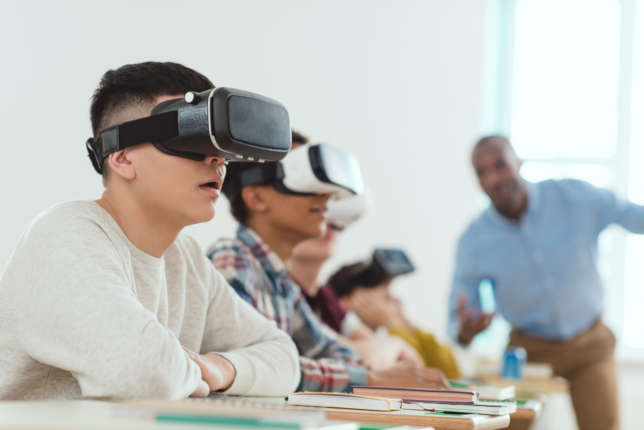Funding Is Top Roadblock to AR & VR in Schools

The education sector is forecast to spend more than $6 billion annually on augmented and virtual reality technologies by 2023. Funding for the technologies remains a major hurdle to adoption, but price points for equipment are dropping rapidly, according to a new market forecast from ABI Research.
According to the report, “Augmented and Virtual Reality in Education,” the market for augmented reality in education will hit $5.3 billion in 2023, with the market for virtual reality head-mounted displays trailing at $640 million.
What’s driving that growth? “AR and VR educational applications shift the learning process from passive to active, allowing students to interact with content and practice their knowledge in real-time conditions,” said Eleftheria Kouri, research analyst at ABI Research, in a prepared statement. “Learning by experience leads to better understanding, enhances knowledge recall, and strengthens retention. Immersive and interactive experiences stimulate student’s motivation and increase their engagement level, which are fundamental factors for achieving learning goals.”
But, according to the report, “Funding is one of the primary barriers for massive adoption of AR/VR solutions within educational systems, due to the high cost of headsets along with the limited financial resources in many schools. Mobile device-based solutions are a cost-efficient option due to the existing large install base, although fully immersive experiences aren’t possible. Head-mounted experiences provide the most immersive experience possible but also can be challenging when it comes to price and implementation.”
But the average selling price of augmented reality glasses is expected to drop to $733 for monocular and $347 for binocular by 2023, according to the report. Meanwhile, VR headsets will drop to about $200 in the same timeframe.
“AR and VR solutions can significantly enhance learning experiences for all age groups and assist educational efforts through greater student interest and interactivity, leading to objective improvements in learning efficacy,” said Eric Abbruzzese, principal analyst at ABI, also in a prepared statement. “In an ongoing quest to maintain student’s attention, new visualization and interaction tools are a natural fit. Greater visualization capabilities fit in upper learning and research efforts as well, so AR/VR can address the entire education ecosystem from Kindergarten through to post-graduate research. Add to this the flexibility of digital updateable and customizable content in a curriculum, and AR and VR are set up to play a catalytic role in education system going forward, provided the lowering prices and increasing content creation continue.”
The complete report is available online for a fee.